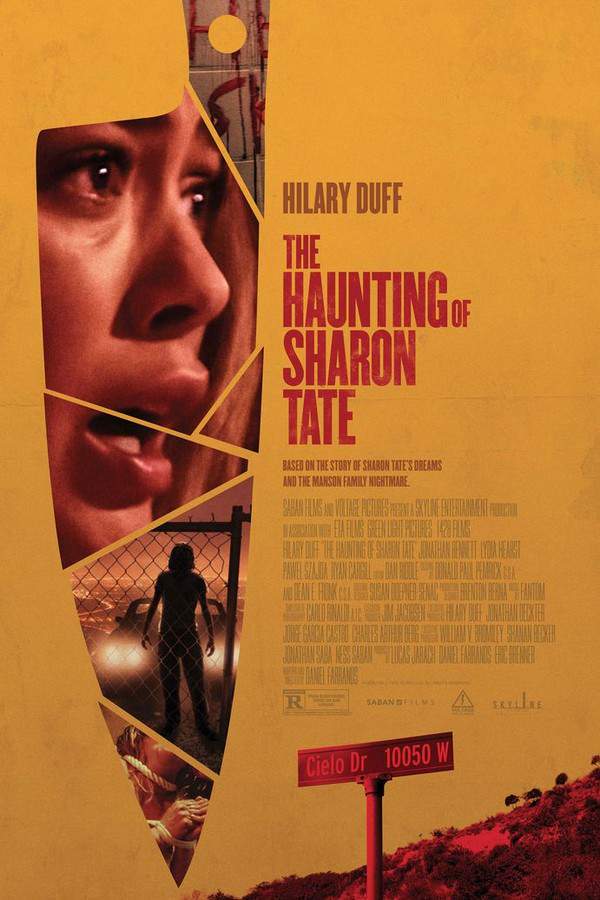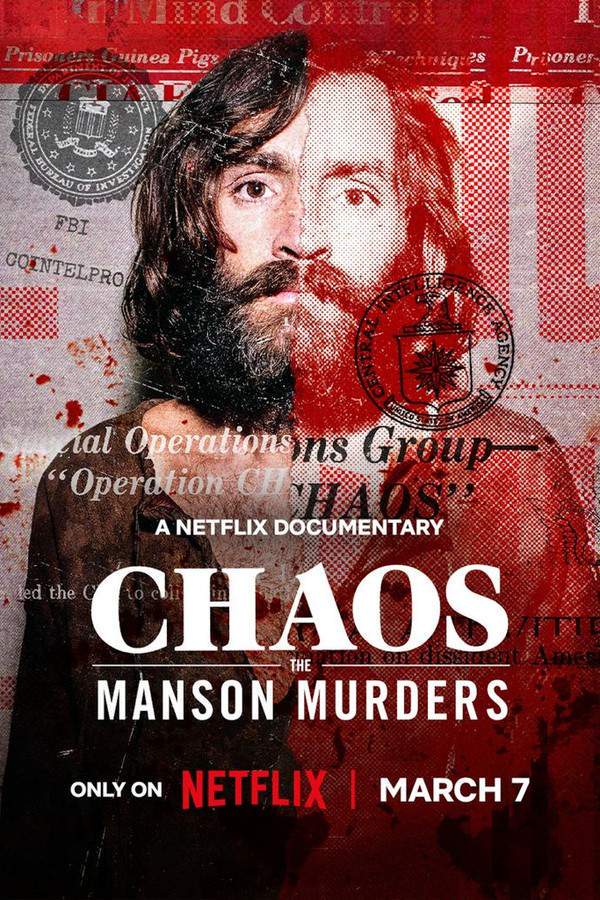Warning: spoilers below!
Haven’t seen Helter Skelter yet? This summary contains major spoilers. Bookmark the page, watch the movie, and come back for the full breakdown. If you're ready, scroll on and relive the story!
Helter Skelter (1976) – Full Plot Summary & Ending Explained
Read the complete plot breakdown of Helter Skelter (1976), including all key story events, major twists, and the ending explained in detail. Discover what really happened—and what it all means.
William Garretson, Jon Gries, is arrested after the discovery of the bodies at Sharon Tate’s home but is released three days later for lack of evidence. The film then makes clear that the police are reluctant to immediately connect the Tate killings with the Hinman murder and the LaBianca killings, despite several striking similarities between the crime scenes—most notably writing in blood on the walls. Instead of pursuing a direct link to the other murders, investigators lean toward a drug-related angle for the Tate case, a choice that shapes the early course of the investigation.
The story shifts to the sprawling Spahn Ranch, where a police raid targets what they suspect to be an auto theft ring and, in the process, aims to arrest Charles Manson and members of his enigmatic following. A quiet, almost incidental detail unfolds: nine-year-old Steven Quint discovers a gun, and his father hands it over to the police, only to see the weapon ignored and left unexamined. This understated moment echoes the broader sense of missed opportunities that permeates the narrative. As the investigation continues, the Manson Family is released from prison, and later two young girls fleeing Death Valley—Stephanie Mark and Kitty Lutesinger in the film’s shorthand—tell police that the group has relocated to Barker Ranch and that Susan Atkins was involved in the Hinman murder. The implications are chilling, and the weight of what is known begins to feel almost overwhelming.
Susan Atkins soon becomes a central figure in the unfolding drama. Arrested, she ends up sharing details with a fellow inmate Ronnie Howard about her involvement in not only the Hinman murder but a far broader history of violence, including the Tate killings. This admission becomes a catalyst that intensifies the investigation and propels the case toward a formal mountain of charges. The tension between what is known, what is suspected, and what can be proven becomes a key engine of the story, as investigators and prosecutors work to connect the dots that span multiple killings and a radical, insurgent worldview.
Vincent Bugliosi, the Los Angeles District Attorney, enters the narrative as a meticulous, calculating presence. He interviews Danny DeCarlo, who offers a tour of Spahn Ranch and describes Manson as possessing a .22 caliber Buntline revolver that matches the weapon used in the murders. This claim, if borne out, would become a crucial thread in the prosecution’s case. The film follows Bugliosi as he pieces together the timeline and builds a strategy that would eventually bring extraordinary pressure to bear on the charged individuals. Danny DeCarlo, Rudy Ramos, serves as a key witness who helps connect the physical evidence to the suspects, and Bugliosi’s methodical approach to ballistics and forensics begins to tighten the net around the defendants.
As the investigation deepens, word of the mounting evidence reaches the public consciousness through dramatic moments. Ronnie Howard places a call to the homicide division to relay new information, but the police’s response is curt and unsympathetic, a moment that amplifies the sense of public distrust in law enforcement’s handling of the case. Bugliosi’s team secures arrest warrants for participants in the killings, and Linda Kasabian, Marilyn Burns, eventually surrenders on the warrant. The fingerprints of Tex Watson, Billy Durkin, and Patricia Krenwinkel, Christina Hart, are matched to those found at the Tate residence, providing tangible links between the suspects and the crime scenes. The film underscores how each new bit of forensic and documentary evidence moves the case from rumor to courtroom reality.
During grand jury proceedings, Susan Atkins reveals more details about the Tate and LaBianca killings, and the chain reaction is swift: Susan, Leslie Van Houten, Tex Watson, Patricia Krenwinkel, Linda Kasabian, and Manson are all brought up on charges. The restructuring of the investigation into a formal murder case is now complete, and the scope of accountability begins to crystallize. A small, almost human moment is captured when a reporter and photographer from KABC-TV attempt to retrace the events as reported in the newspapers; their work adds texture to the public’s understanding of the crimes. The scene where a father calls about the .22 revolver—and the investigators’ dismissive response—becomes a pointed reminder of the human side of the tragedy and the public’s appetite for answers.
Bugliosi uses ballistic testing to link the gun to the weapon used in the murder of Jay Sebring, a connection that anchors the investigation in a forensic reality. The sense that the case is coming together is palpable, even as the defense begins to frame its strategy around Manson’s controversial intent and leadership. Manson himself chooses to represent himself at trial, a bold and destabilizing move that forces Bugliosi to adapt. The prosecutor manipulates the clock, cleverly engineering more time for the grand jury and trial preparation, a tactical sequence that allows him to assemble a more persuasive case. Bugliosi interviews former Manson Family member Paul Watkins, Jonathan Goldsmith, who illuminates Manson’s worldview, including the chilling notion that the Beatles were sending him messages intended to ignite a race war he dubs “Helter Skelter.”
As the trial unfolds, Linda Kasabian testifies to the Tate and LaBianca murders, her testimony coming under sustained procedural objection from the defense. The courtroom drama intensifies: Manson erupts with a abrupt, dangerous outburst, leaps toward the judge, only to be subdued, and the cadence of the proceedings shifts under a heavy weight of attention from the press and the public. The defendants are ultimately ordered out of the courtroom during closing arguments as the proceedings move toward verdicts, and a series of death sentences are pronounced. The film then situates this outcome within a larger arc of legal history, noting that California would later abolish the death penalty in 1972, changing the gravity and future implications for the convicts and the judicial system alike.
Through it all, the film remains anchored in the tension between a culture of violent, radicalized disaffection and the orderly processes of law. It emphasizes how individuals, the media, forensic science, and legal strategy intersect to shape a case that became one of the defining trials of the era. The story of the Tate–LaBianca murders, the Manson Family, and the pursuit of justice is told with a calm, sober clarity, inviting viewers to reflect on the delicate balance between understanding motive, evaluating evidence, and deciding on punishment within a legal framework that was, at the time, as unsettled as the cultural landscape around it.
Last Updated: October 09, 2025 at 12:34
Unlock the Full Story of Helter Skelter
Don't stop at just watching — explore Helter Skelter in full detail. From the complete plot summary and scene-by-scene timeline to character breakdowns, thematic analysis, and a deep dive into the ending — every page helps you truly understand what Helter Skelter is all about. Plus, discover what's next after the movie.
Helter Skelter Timeline
Track the full timeline of Helter Skelter with every major event arranged chronologically. Perfect for decoding non-linear storytelling, flashbacks, or parallel narratives with a clear scene-by-scene breakdown.

Similar Movies to Helter Skelter
Discover movies like Helter Skelter that share similar genres, themes, and storytelling elements. Whether you’re drawn to the atmosphere, character arcs, or plot structure, these curated recommendations will help you explore more films you’ll love.
Explore More About Movie Helter Skelter
Helter Skelter (1976) Scene-by-Scene Movie Timeline
Helter Skelter (1976) Movie Characters, Themes & Settings
Helter Skelter (1976) Spoiler-Free Summary & Key Flow
Movies Like Helter Skelter – Similar Titles You’ll Enjoy
The Haunting of Sharon Tate (2019) Detailed Story Recap
The Resurrection of Charles Manson (2023) Plot Summary & Ending Explained
CHAOS: The Manson Murders (2025) Film Overview & Timeline
The Manson Family Massacre (2019) Full Movie Breakdown
Helter Skelter (2000) Story Summary & Characters
Gimme Skelter (2007) Film Overview & Timeline
Inside The Manson Gang (2007) Detailed Story Recap
Helter Skelter: An American Myth (1000) Full Movie Breakdown
Helter Skelter: An American Myth (1000) Plot Summary & Ending Explained
Helter Skelter (1000) Movie Recap & Themes
The Manson Family (1997) Complete Plot Breakdown
Murder in the Heartland (1000) Film Overview & Timeline
Manson’s Missing Victims (2008) Movie Recap & Themes
Charles Manson Then & Now (1992) Film Overview & Timeline
The Manson Massacre (1971) Full Summary & Key Details


















